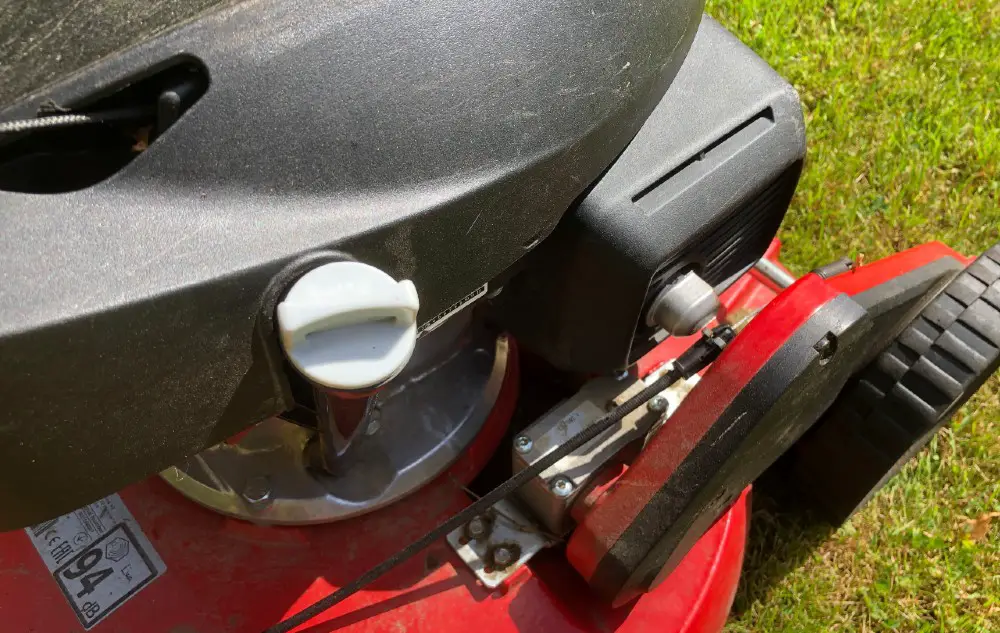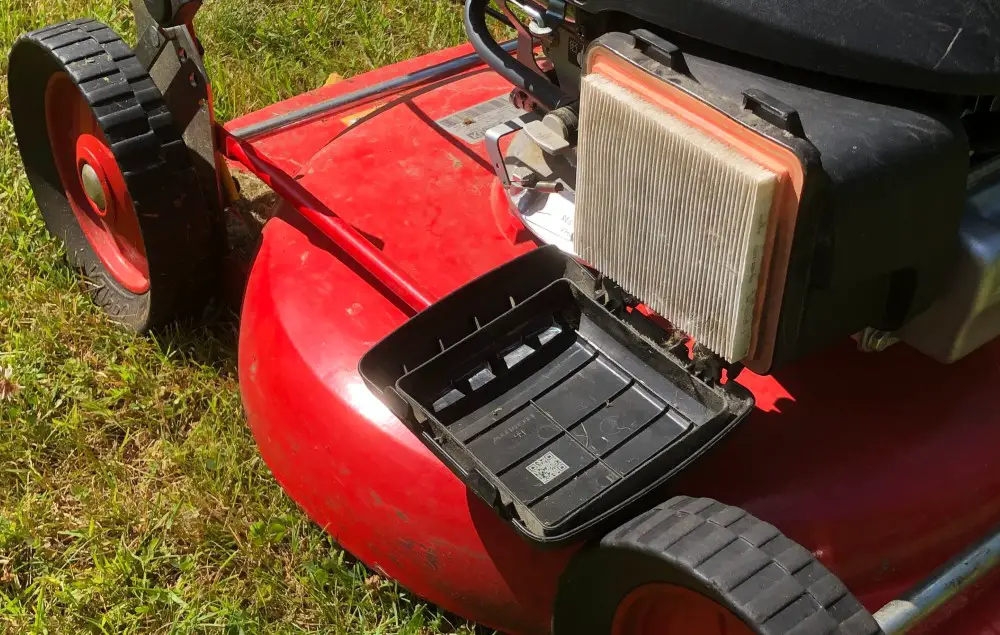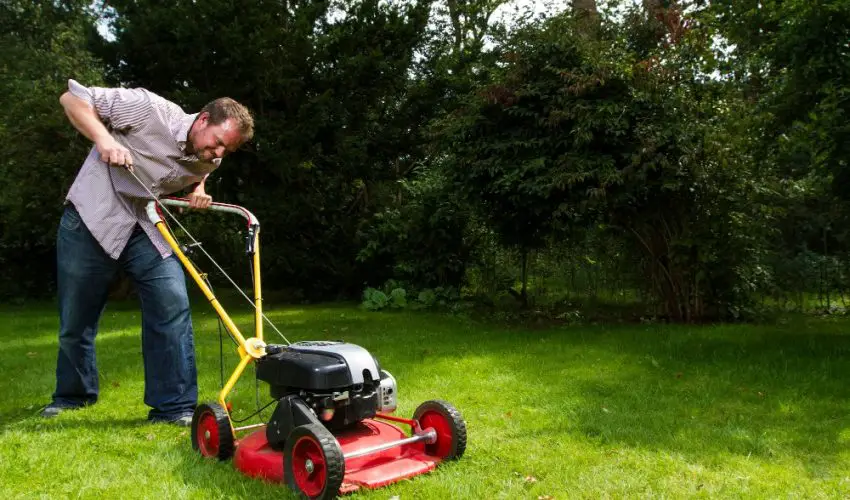If you’ve recently purchased your first gas-powered lawn mower, the most crucial step is to ensure that it has oil in the tank. Typically, push mowers are delivered without oil, while riding mowers usually come with it. However, it’s essential to check your manual or use the oil dipstick to confirm.
Table of Contents
ToggleUsing the correct type of fuel is also crucial. I recommend alkylate gasoline for its lower negative impact on your lawn mower and the reduced health risks it presents to you. Alkylate gasoline emits fewer harmful fumes than regular gasoline, which means less exposure to potentially dangerous vapors for you.
The primary drawback is its cost; alkylate gasoline is more expensive. However, the benefits to your mower’s performance and your health can justify the extra expense.
Best Practices for a New Lawn Mower
After the initial 5 to 10 hours of operation, it’s important to change the oil in your new lawn mower. This early change is crucial because tiny metal particles from the engine can mix into the oil during the break-in period. Replacing the oil early helps remove these particles, protecting your engine and ensuring optimal performance. Remember, this is a one-time requirement.
For ongoing maintenance, changing the oil once per season is typically sufficient. Ideally, perform this maintenance in the spring to prepare for the upcoming mowing season or in the fall after the season ends.

If your lawn mower sees less frequent use, you can wait to change the oil until it appears darker, indicating it’s time for a refresh. This strategy ensures your mower remains in great shape without over-maintenance.
Safe Maintenance Practices
First things first, always remember to disconnect the spark plug before you start any sort of maintenance, especially if you’re going to be working near the blades. This simple step is crucial because it stops the mower from accidentally starting up, which could lead to dangerous situations.
Another important tip is to let your mower cool down before you start tinkering with it. If you’ve just finished mowing, the engine can be really hot, and touching it too soon could lead to burns. So, patience is a virtue here – wait until it’s cool to the touch to avoid any unnecessary injuries.
Seasonal Maintenance Schedule
Maintaining your lawn mower through the changing seasons ensures it runs efficiently and extends its lifespan. Here’s how to keep it in prime condition all year round.
Spring
Spring is here, and it’s time to get your lawn mower ready. Here’s what I do:
- Fresh Gas: Start with fresh gas. Old gas from last year isn’t great. I like using alkylate gasoline because it doesn’t go bad as quickly, so your mower starts up easier after sitting all winter.
- Spark Plug: If the spark plug looks dirty or dark at the bottom, replace it. A new one can make starting your mower a lot easier.
- Air Filter: If the air filter is dirty, especially on a new mower, you might think about cleaning it. But, it’s usually easier just to replace it with a new one.

- Check the Blade: Make sure the blade isn’t dull. A sharp blade means a clean cut for your lawn. If it’s not sharp, sharpen it before you start mowing.
- Check the Belts on Rider Mowers: If you have a riding mower, take a look at the belts. If they’re worn out, they can make your mower less effective. Checking now can save you trouble later.
Remember, lawn mowers can have different kinds of air filters. So, it’s a good idea to check your manual, or take the old filter with you when you’re buying a new one.
And a tip: write down your mower’s serial number or bring the manual to the store to make sure you get the right parts, like the spark plug and air filter. It makes getting the right parts a lot easier.
Summer
Summer means a lot of mowing, so keeping your mower in good shape is crucial. Here’s my routine:
- Clean the Lawn Mower: After each mow, give your mower a good clean. Grass and bits can jam it up and make it overheat. A quick clean keeps it running cool and smooth.
- Oil Check: Keep an eye on the oil level. Check it often and fill it up when it’s low to make sure the engine stays happy and lubricated.
- Check the Blade: Blades get dull with all that cutting. Midway through the summer, give them a check. If they’re not as sharp as they should be, sharpen them up. It makes a big difference in how your lawn looks.
Keeping on top of these things makes sure your mower stays ready for action all summer long. Plus, it saves you time and hassle in the long run.
Fall
When the leaves start falling and the grass stops growing, it’s time to get your mower ready for a winter break. Here’s how I do it:
- One Last Clean: After the last mow, give your mower a good scrub. Get all the grass and dirt off to keep it in good shape. This step prevents rust and keeps your mower nice for spring.
- Fuel Tank Tips: For gas mowers, you’ve got two choices. You can run the engine until it’s out of gas, or you can add a fuel stabilizer. Both ways stop the gas from going bad over the winter.
- Store your Lawn Mower: Find a dry spot to store your mower, away from any dampness that can cause rust or damage. A garage or shed works great. Keeping it covered and out of the wet helps ensure it’ll be ready to go when spring rolls around again.
Taking care of these things in the fall means your mower will be all set for next year, saving you trouble and keeping your mower running well.
Wrapping It All Up
Taking care of your lawn mower with regular maintenance isn’t just about keeping it running; it’s about making your life easier and your lawn look better. From the fresh start in spring, through the busy mowing days of summer, to wrapping things up in fall, these tips are all about keeping your mower in top shape year-round.
A little effort goes a long way in extending the life of your mower and keeping your lawn pristine. So, here’s to a well-maintained mower and the beautiful lawn that comes with it!





